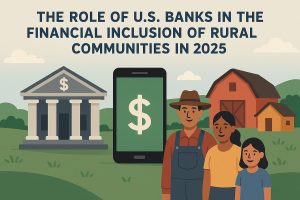In the past decade, banks across the United States have undergone one of the most remarkable technological transformations in history. Driven by artificial intelligence and data analytics, financial institutions are transitioning from reactive service providers to proactive partners. Predictive intelligence allows them to anticipate customer needs before they are even expressed, fundamentally reshaping how clients interact with their money. This evolution not only increases efficiency but also creates a more human banking experience — one built on foresight, personalization, and trust.
Consumers today expect more than simple account management. They want guidance, insight, and real-time financial awareness. To meet these expectations, Banks have begun adopting systems that combine historical behavior with advanced algorithms, capable of predicting when a customer might overspend, save less, or even miss a payment. The goal is to transform every transaction into an opportunity for meaningful engagement and to make financial well-being a shared mission between the institution and the individual.
The rise of predictive intelligence
Predictive intelligence marks a new phase for the banking sector. It uses large datasets to forecast customer actions and deliver personalized advice. Instead of waiting for a client to request help, Banks can now alert them about upcoming expenses, credit opportunities, or investment risks. This shift from reaction to prediction represents one of the most significant cultural changes in modern finance — turning banking into an anticipatory service rather than a transactional one.
What makes this change revolutionary is its emotional dimension. Predictive banking doesn’t just save time; it builds trust. Customers feel understood when their bank communicates proactively, suggesting practical steps that align with their goals. This strengthens long-term loyalty and positions institutions as financial allies instead of faceless corporations.
The data-driven relationship
Behind predictive systems lies the power of data analytics. Banks analyze millions of transactions to identify individual patterns, such as spending peaks, saving habits, or investment preferences. These insights feed machine learning models that improve accuracy over time. The result is a hyper-personalized experience, where every recommendation feels relevant.
A great example of this approach is JPMorgan Chase, which has heavily invested in predictive platforms to personalize financial guidance. Their systems integrate AI with human expertise, enabling advisors to provide data-backed insights while maintaining empathy and context. This hybrid model is becoming the blueprint for the future of intelligent banking.
Challenges in predictive transformation

Despite the potential, the road to predictive banking is not without obstacles. The first challenge lies in data privacy. As Banks collect massive amounts of personal information, they must guarantee ethical and transparent use. Consumers are increasingly aware of digital risks and expect clear boundaries regarding how their data is processed. Any breach of trust could have irreversible consequences.
Another barrier is technological inequality. Smaller regional banks often lack the resources to implement advanced predictive systems, risking a growing gap between industry leaders and smaller players. To ensure inclusivity, regulatory frameworks may need to evolve, offering guidelines that balance innovation with responsibility.
The future of intelligent banking
The future of predictive financial intelligence will be defined by integration and anticipation. AI-driven systems will communicate seamlessly with mobile apps, digital wallets, and even wearable devices, creating a continuous flow of personalized insights. Soon, Banks will not just manage money but actively guide customers toward healthier financial decisions — automatically adjusting savings goals, detecting fraud instantly, and offering investment options tailored to life stages.
As the boundary between technology and human service continues to blur, the next generation of banking will be built on intuition. Predictive intelligence will make financial advice feel natural, personal, and always one step ahead. In that future, Banks won’t merely handle transactions — they’ll help customers handle their lives.






